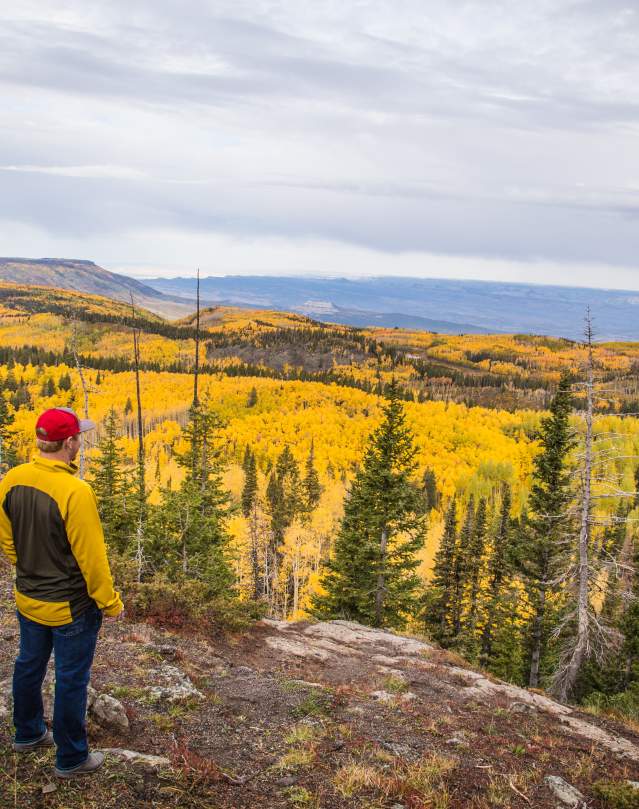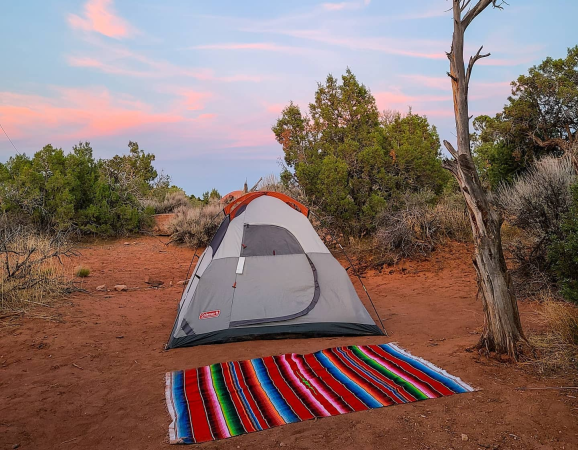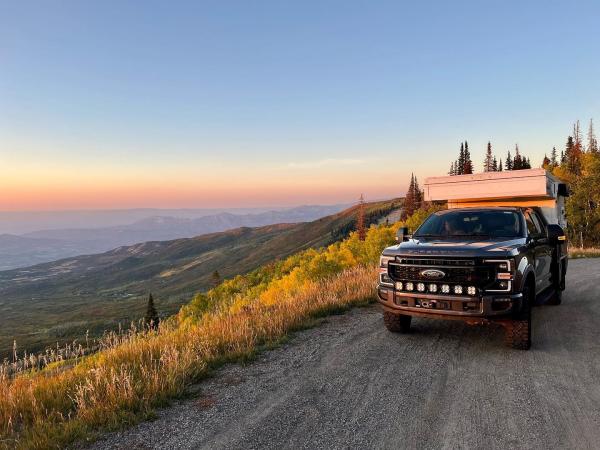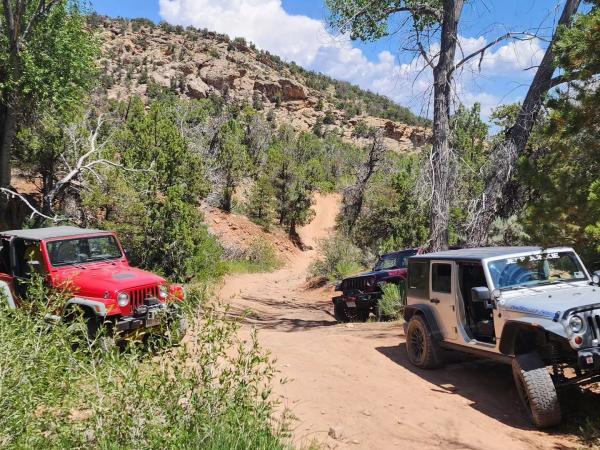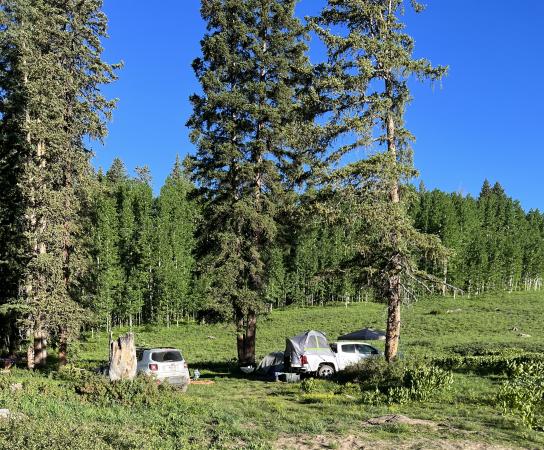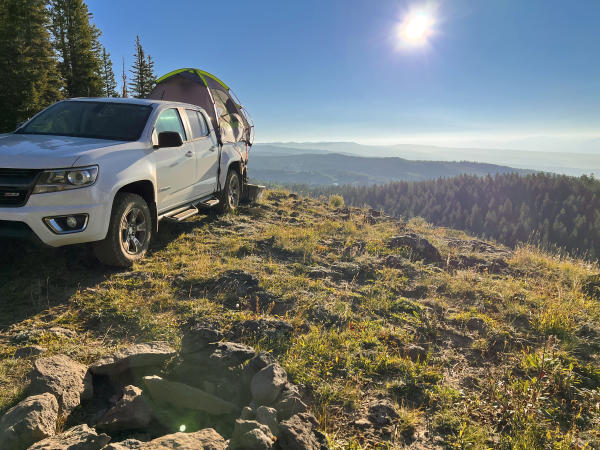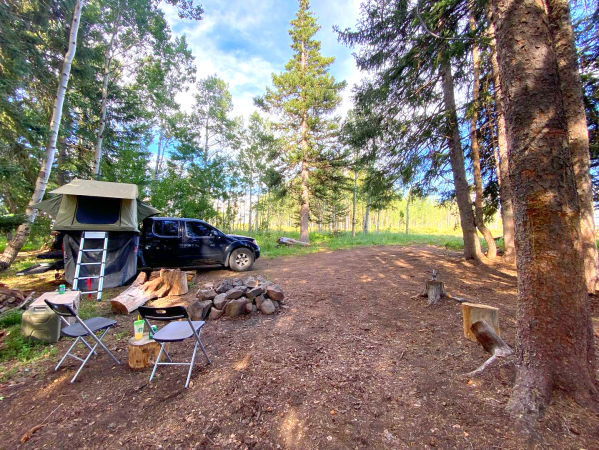
Looking for a remote Colorado camping spot that doesn't require a reservation? You're in luck! Grand Junction is surrounded by over 1.5 million acres of public land and numerous dispersed camping locations that allow you to explore the surrounding wilderness and recreation areas without the hassle of pre-planning or fees. Before you embark on your backcountry adventure, it’s important to understand how to camp safely and responsibly.
What is Dispersed Camping
Dispersed camping, also known as primitive camping or dry camping, offers a unique way to experience the great outdoors by setting up camp in natural areas outside of established campgrounds. Unlike traditional camping, there are no managed sites, providing you with the freedom to choose your spot where you please. This form of camping allows you to connect with nature in a more intimate way where the wilderness is untouched.
Importance of Leave No Trace
When venturing into the pristine landscapes of Grand Junction's dispersed camping areas, embracing the principles of Leave No Trace (LNT) is essential. These principles serve as a guide to ensure that your presence in these wild places has minimal impact, allowing nature to thrive and be enjoyed by future generations.
The seven core principles of Leave No Trace are:
Plan Ahead and Prepare
Before you set out, research your chosen camping area, understand its regulations, and equip yourself with the necessary knowledge and supplies. Using tools like Google Earth can help you identify spots that have been used for dispersed camping in the past, which helps eliminate damage to the landscape.
Travel and Camp on Durable Surfaces
While you are not confined to campgrounds, it is still wise to stick to trails and dispersed campsites that have been established. This prevents soil erosion and damage to fragile ecosystems.
Dispose of Waste Properly
Pack out all trash and leftover food. Use established restroom facilities or follow proper waste disposal if no facilities are available.
Leave What You Find
Preserve the natural environment by not picking plants, disturbing wildlife, or defacing rocks, artifacts or trees.
Minimize Campfire Impact
Use a camp stove for cooking instead of making a fire. If fires are allowed and necessary and there is no existing fire ring, build a mound fire and keep it small; however, most established dispersed campsites have an existing fire ring made from rock.
Respect Wildlife
Observe animals from a distance and avoid feeding them. Human food can harm wildlife and permanently alter their natural behaviors.
Be Considerate of Other Visitors
Keep noise levels down, yield the trail to others, and maintain a friendly and respectful demeanor towards fellow campers and hikers.
For more information on how to effectively use the Leave No Trace Principles, check out this blog.
Dispersed Camping Safety Tips
Tell Someone Where You’re Camping
Before you set out on your backcountry adventure, make sure to inform someone about your camping plans. Share details like your intended camping location, the duration of your stay, and the expected date of your return. This simple precaution can be a lifeline in case of unexpected emergencies. It also ensures that if you encounter any challenges or need assistance, someone knows where to find you.
Be Bear Aware
Be vigilant about bear safety by storing food and scented items in bear-resistant containers or bags, cooking away from sleeping areas, and keeping your campsite spotless to avoid attracting bears and other animals. Dispose of trash properly, never approach a bear, and know how to react in case of an encounter. Keep a safe distance that allows the bear to escape, back away slowly, make yourself bigger by slowly lifting and waving your arms, and make a yelling noise. Do not run to escape an animal and consider carrying bear spray as a precaution.
Check the Weather
The high desert climate of the Grand Junction area can be unpredictable just like all of Colorado, so being prepared for changing weather is essential for your safety and comfort.
Keep an eye on weather forecasts for the area you plan to camp in, paying attention to factors like temperature fluctuations, precipitation forecast, and severe weather warnings. Pack appropriate clothing and gear to handle a range of conditions and be ready to adjust your plans if the forecast indicates adverse weather.
Best Dispersed Camping Locations in Grand Junction, Colorado
BLM Land
The Grand Junction Field Office oversees more than one million acres of public lands surrounding the city. With an array of recreational opportunities, including hiking, horseback riding, rafting, OHV (Off-Highway Vehicle) exploration, and mountain biking, Grand Junction's BLM (Bureau of Land Management) lands offer a refreshing escape from the bustling crowds increasingly found in Colorado's national parks and Front Range. Amidst this sprawling public land, you'll discover numerous picturesque, dispersed camping areas with existing sites to choose from.
When camping on BLM lands, it’s recommended to select sites that are already established as dispersed camping sites. When traveling via a motorized vehicle, you should not be camping in the vicinity of developed recreation areas like picnic areas, campgrounds, trailheads or within 200 feet from any stream or other water source. Finding a spot that has an established fire ring made of rock, to protect against wildfire, is recommended to avoid further damage to the land. If you do not decide to use an existing site, minimize your impact by using a camp stove or fire mound, and check for current fire restrictions. Properly dispose of human waste, by burying it away from water sources in a hole at least 6 inches deep. By following these guidelines, you can enjoy the beauty of Grand Junction's BLM lands while preserving their natural splendor for generations to come.
Grand Mesa National Forest
Grand Mesa National Forest covers vast areas of Mesa, Delta, and Garfield Counties. This forest showcases the region's remarkable beauty, encompassing the largest flat-top mountain in the world that is bursting with over 300 lakes, and reaches south to Battlement Mesa. Its diverse landscapes include lush forests, high alpine lakes, serene meadows, and towering peaks, making it a haven for outdoor enthusiasts.
To locate suitable dispersed camping sites in Grand Mesa National Forest and access the latest information, contact the local Forest Service office and consult the Motor Vehicle Use Map. While dispersed camping is generally permitted throughout the forest, exercise caution when choosing your site. Recreation maps are readily available at all local Forest Service offices, where knowledgeable personnel can address your specific inquiries. These maps can also be found online here.
Embrace the Solitude
Whether you're looking to escape the crowds, stargaze under the vast Colorado sky, or simply immerse yourself in the serene beauty of the high desert, Grand Junction's dispersed camping opportunities provide a unique and unforgettable way to connect with the natural world. Learn more about Grand Junction's outdoor activities by checking out the Official Grand Junction Visitor Guide.

